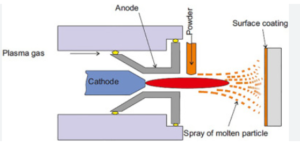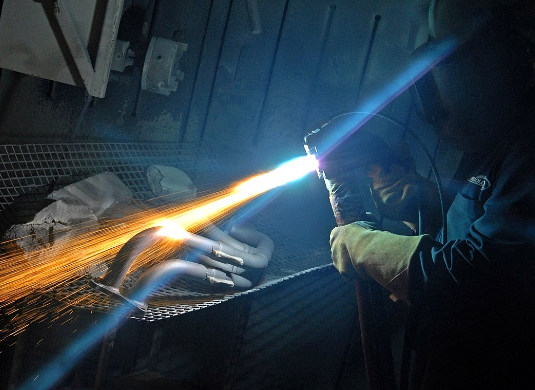Plasma spray coating is a thermal spray coating process that provides a solution to many different applications in both high- and low-temperature environments.
A wide range of plasma spray coating techniques is used throughout the coatings industry. Each technique is used to provide a strong, protective and corrosion-resistant coating to structural materials, such as those used in the automotive and aircraft industries.
How does the plasma spray coating process work?
Plasma spray coating allows for a variety of substrates to be provided with a functional coating. A semi-molten material is used to coat the substrate via a plasma spray gun. The gun requires the addition of a gas, such as nitrogen, argon, helium, or hydrogen.

Material in powder form is exposed to a high-temperature plasma flame and is rapidly heated to high temperature and velocity. On impact with the substrate surface, it cools rapidly to form the coating.
Plasma spray coating can be carried out at lower temperatures, meaning there is little risk of the original substrate becoming damaged or distorted. It provides a smooth finish coating that is corrosion- and erosion-resistant and has thermal properties.
Plasma spray
Surface treatment specialists offer a wide range of plasma spray processes tailored to the specific needs of the client’s industry. State-of-the-art techniques, such as the Apticote coating application that uses a unique ceramic-metallic blend, allow for additional properties such as low friction, corrosion resistance, and even FDA compliance.
More information on plasma spray coatings services, including the Apticote application, is available from surface engineering specialists such as www.poeton.co.uk/standard-treatments/plasma-coatings/.

Plasma spray coating is not only the perfect application for ensuring longevity in parts and substrates but also for salvaging worn parts and components, which can be reclaimed and reused with resurfacing.

